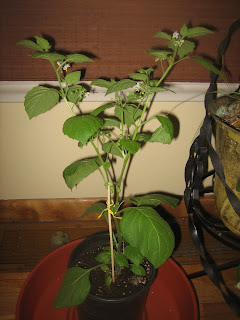
So I was inspired to grow cocoa after watching some youtube videos by
Praxxus55712. I'm going to direct you to go to his link and watch how he does it. He explains everything really well and I would direct anyone else to watch his video I have linked to his name. I just want to document the growth of the plants. The main thing I did differently was the way I mixed my soil. There's a lot of amendments, but I have all these ingredients laying around and organic soil isn't cheap. I ordered the seeds from
http://www.montosogardens.com/online_store.htm
I have heard that the plants are susceptible to fungi and enjoy a rich loam soil. So I made sure to add a lot of sand and perlite with the forest litter. Reading through some of the articles on growing cacao organically, they suggest having different sources of lignin so that is another reason I added the forest litter which is made up of twigs, leafs, and needles. My biggest issue is trying to keep all 8 trays warm enough to germinate them.

 Like I said in a previous post the Cacao theobromas each are different from the next one. I wanted to show a few of the personalities in the group to give an idea of what I mean. This first one has many leaves sprouting from all over the stem with only one large leaf sticking straight up. The second one poked a wedge out of the bean and is now pushing its leaves out, while most others would unfold the bean roughly in half. The third one actually didn't fully lift its bean. Instead it grew the stem out and up from the bean that stayed in the soil. The fourth one crosses its two long translucent leaves across the small one in the center, as if it has anything to be shy about. The final one has bright green leaves and a symmetric square shape. If you click on it you can see the glandular trichomes that covers the leaves and stems.
Like I said in a previous post the Cacao theobromas each are different from the next one. I wanted to show a few of the personalities in the group to give an idea of what I mean. This first one has many leaves sprouting from all over the stem with only one large leaf sticking straight up. The second one poked a wedge out of the bean and is now pushing its leaves out, while most others would unfold the bean roughly in half. The third one actually didn't fully lift its bean. Instead it grew the stem out and up from the bean that stayed in the soil. The fourth one crosses its two long translucent leaves across the small one in the center, as if it has anything to be shy about. The final one has bright green leaves and a symmetric square shape. If you click on it you can see the glandular trichomes that covers the leaves and stems.


































